 |
||||
Collecting integrated samples with a plankton net |
||||
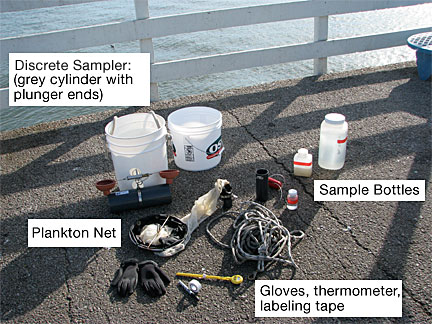 |
|
Equipment needed to gather weekly phytoplankton samples at the Santa Cruz Wharf. Equipment includes a discrete sampler and a plankton net, along with gloves, a thermometer, tape and pens, and a plastic bucket and bottles for holding collected samples. The plankton net is used to collect an integrated water sample (multiple depths combined). |
||
This photo shows a net tow being taken at the wharf. A jar is attached to the bottom of the net, which collects a concentrated sample as the net is pulled through the water.
The net can be pulled along the surface of the water or lowered to a desired depth before pulling it back to the surface. Plankton are unevenly distributed throughout the water, so a plankton net will help to gather a variety of organisms within a particular "slice" of the water column. |
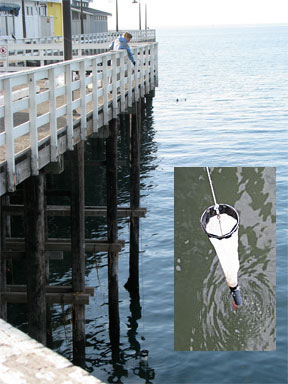 |
|||
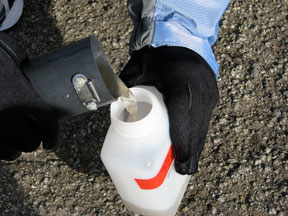 |
Pouring the net tow sample from the jar (detached from the bottom of the net) into a bottle to take back to the lab. | |||
| The sample is poured into a petri dish and looked at through a stereoscope. A stereoscope is a kind of microscope that shows the 3-D features of the phytoplankton cells. | 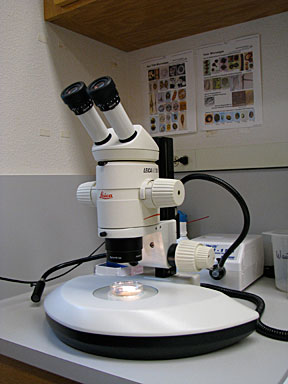 |
|||
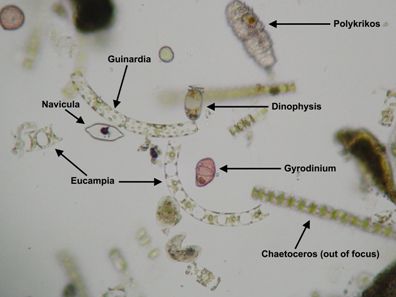 |
Many factors affect what kinds of plankton you will see in a sample, such as the time of year , time of day, and water temperature. At left is a photo of a a variety of different kinds of phytoplankton viewed through a microscope. | |||